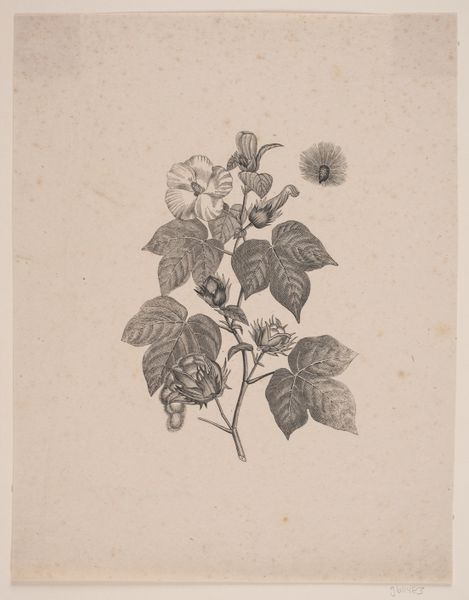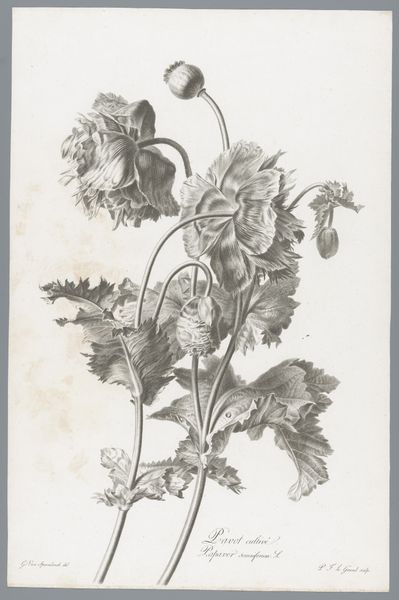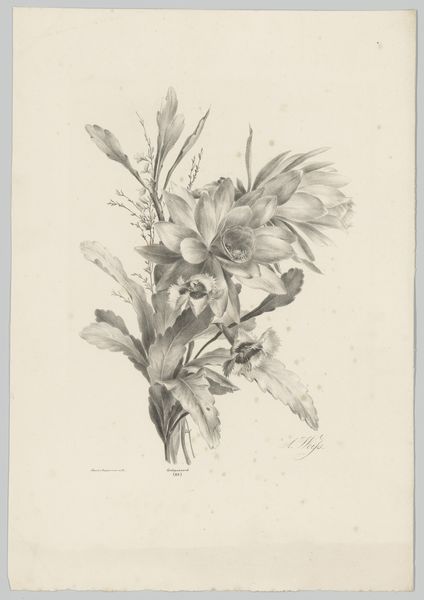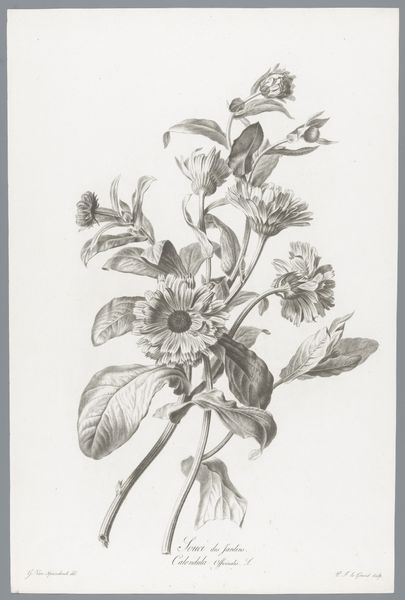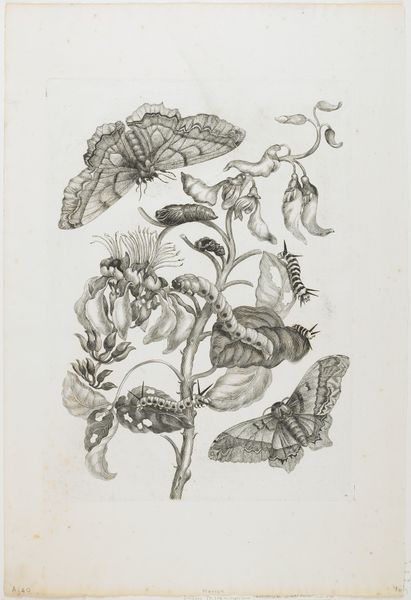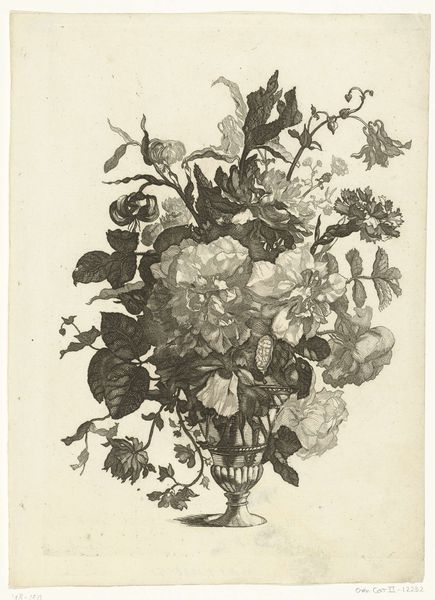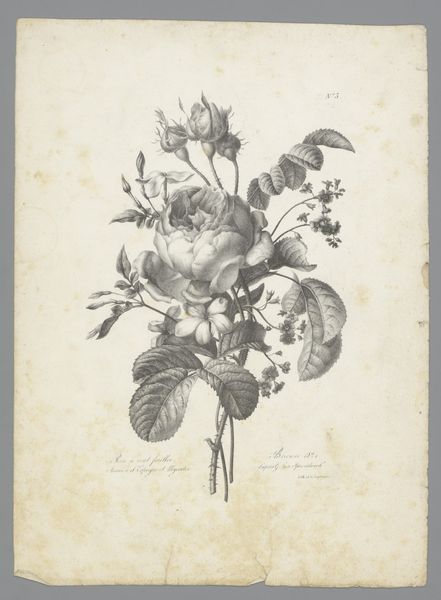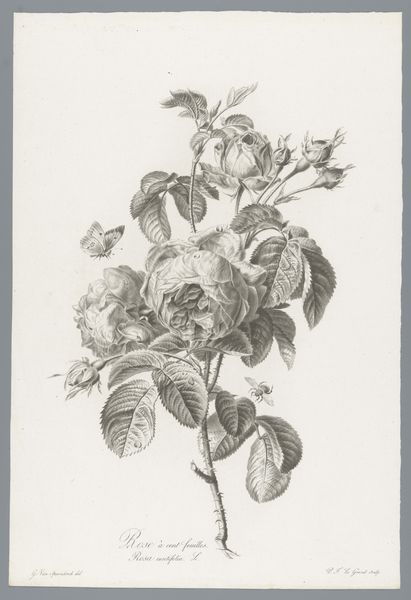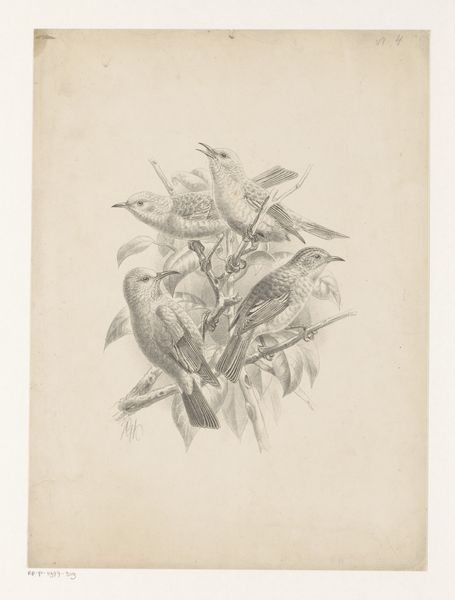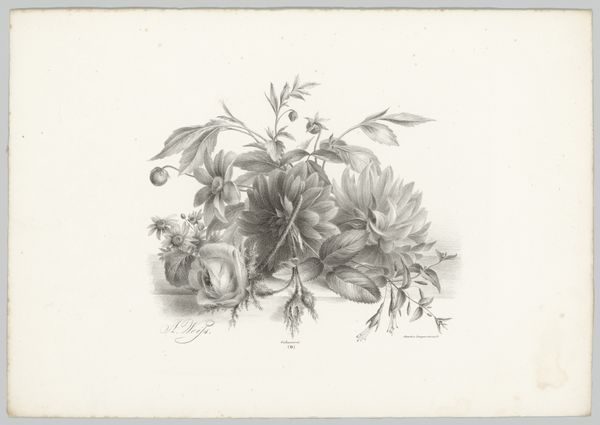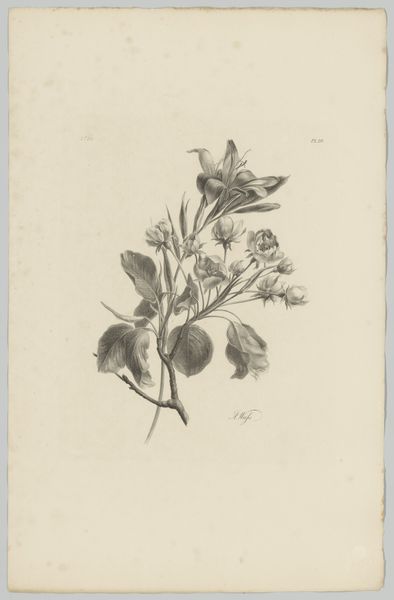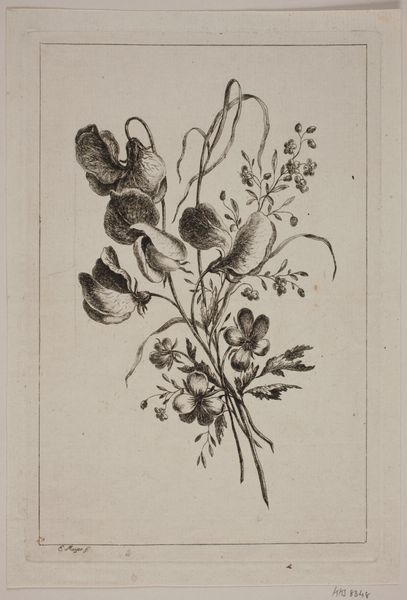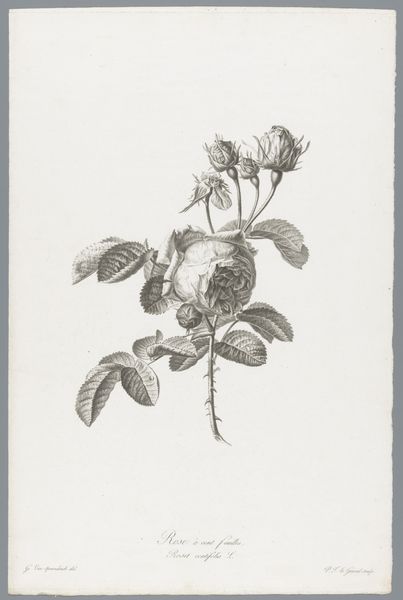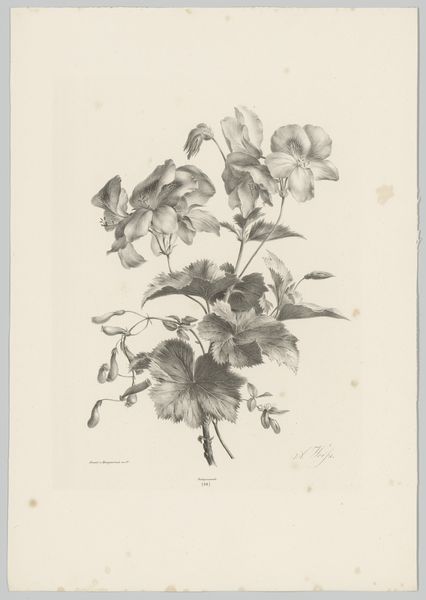
drawing, pencil
#
drawing
#
botanical illustration
#
pencil
#
botanical drawing
#
watercolour illustration
#
botanical art
#
realism
Dimensions: height 310 mm, width 222 mm
Copyright: Rijks Museum: Open Domain
Editor: This lovely drawing, titled "Twee rozen" or "Two Roses" was created by Carel Christiaan Antony Last sometime between 1834 and 1850. It's pencil and watercolour on paper and feels incredibly detailed, almost photographic in its realism. What historical context surrounds botanical drawings like this? Curator: Botanical illustrations, particularly during the 19th century, served a dual purpose. Certainly, they were appreciated aesthetically as we can still observe today. However, their scientific and economic significance in documenting and classifying plant species was profound. Think of the rise of colonialism at the time, the flow of flora around the world, and the imperative for imperial nations to inventory natural resources. How does the piece's detailed realism, which you've noted, speak to that context? Editor: So the artistic style becomes almost a tool for documentation? It wasn’t just about beauty, but about creating accurate records that could be used for scientific or even economic purposes. It's interesting how those motives intersect within an art object. Do you see any echoes of those functions today? Curator: Precisely. The image production was intertwined with the societal, political, and scientific objectives. Even now, think of fields like forensic botany. Detail is key and accurate visual representations can support environmental conservation. Does knowing about these potential meanings change how you look at the image? Editor: Definitely. It shifts my understanding from simply appreciating its aesthetic qualities to recognizing its potential role in a broader network of scientific observation and cultural exchange. Curator: Yes, and consider the institutions exhibiting and preserving these works. The Rijksmuseum's role highlights how botanical art attained cultural capital. In this perspective, what we choose to collect and exhibit tells a broader cultural and intellectual history. Editor: Fascinating, I'll never look at a flower drawing the same way!
Comments
No comments
Be the first to comment and join the conversation on the ultimate creative platform.
